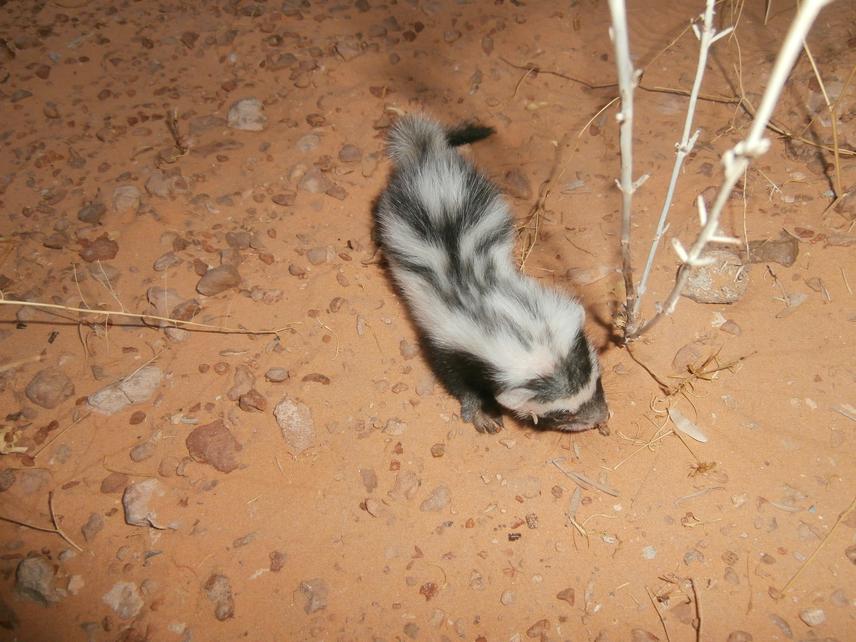Firas Hayder
Other projects
31 Jul 2019
Ecology, Behaviour and Conservation of Libyan Striped Weasel (Ictonyx libycus) in Tunisia
This study will aim to estimate the distribution and the relative abundance of Libyan striped weasel in Tunisia, to understand the trend of this species in each ecosystem and to understand the factors that govern distribution. In addition, the project will aim to identify the threats so as to be able to devise conservation measures for this small carnivore. Furthermore, an awareness programme will be launched, in order to highlight the species’ ecological role in particular, and that of small carnivores in general.

The Libyan Striped Weasel (Ictonyx libycus) is a mustelid endemic to Africa. It is present in northern Africa from Morocco and Senegal to Egypt and Eritrea. Despite its vast distribution, this small carnivore is still largely unknown due to the lack of research on both its ecology and conservation status. According to the IUCN Red List this species is globally classified as non-threatened because it has a wide distribution range. However, the species can locally face severe threats. For example, in Tunisia it is suspected that the Libyan Striped Weasel is targeted by poachers and used commercially due to its medical virtues, and suffers from loss of habitat and other threats.
To determine Libyan Striped weasel’s distribution and to estimate the relative abundance and conservation status of this species in Tunisia I will carry out questionnaire survey of (rangers, conservators, hunters, local people, poachers and Traders). Also direct observation and live trapping will then complement the data collected through interviews. In this study, I will divide the total area of Tunisia in 17 grid cells of 100 km x 100 km. Then, inside each of these grid cells, I will choose between 1 and 3 sampling areas of 15 km x 15 km each, which are representative of the main habitats/ecosystems present in each grid cell. A single sampling area will be chosen in very homogenous landscapes (e.g. desert) or in regions where the species is likely to occur in a single habitat.
Furthermore, I will concentrate on developing a community conservation awareness programme to highlight the species’ ecological role. This will involve oral presentations and/or distribution of flyers in several schools throughout the country, direct discussions with farmers, as well as interventions in radio programmes.